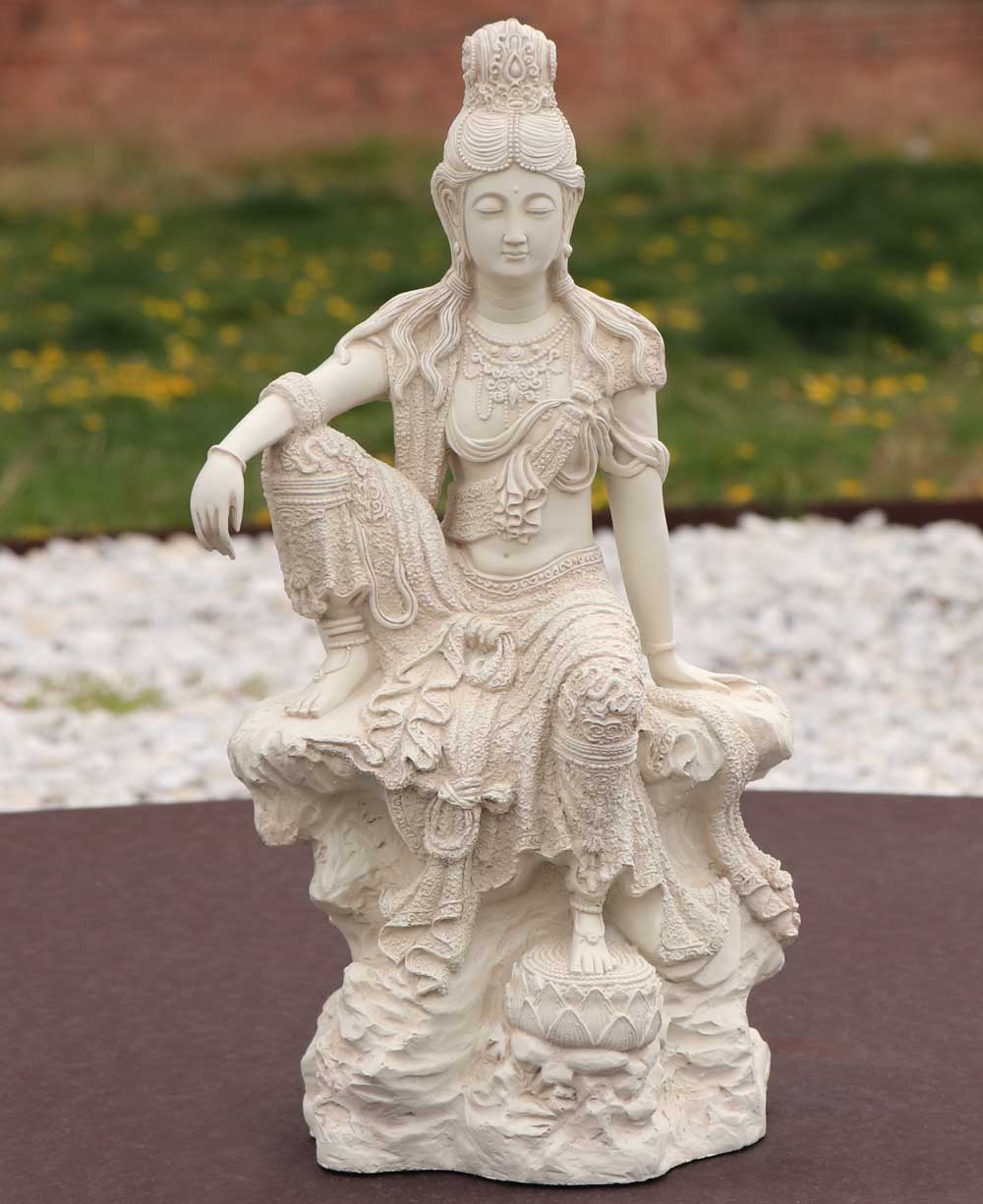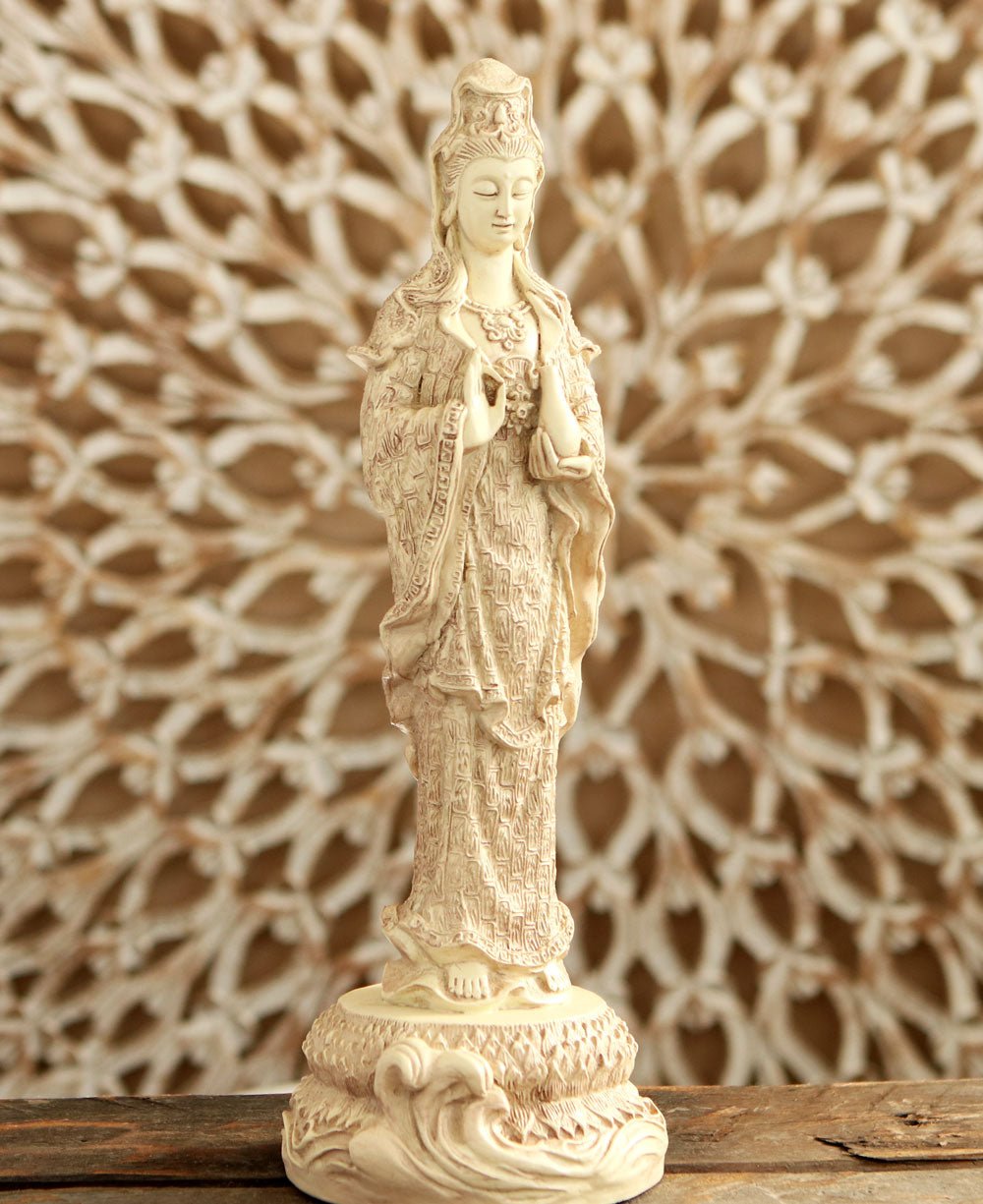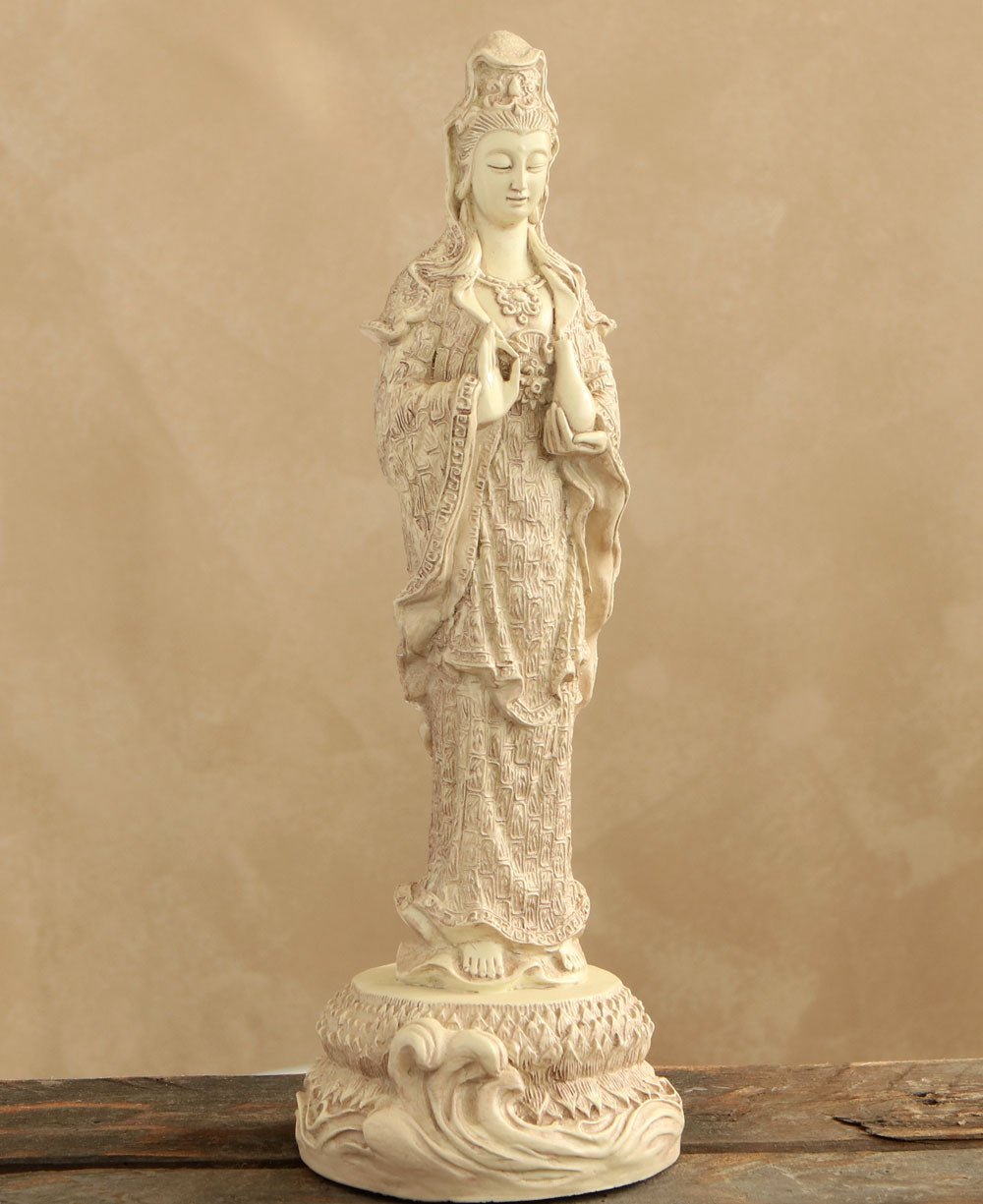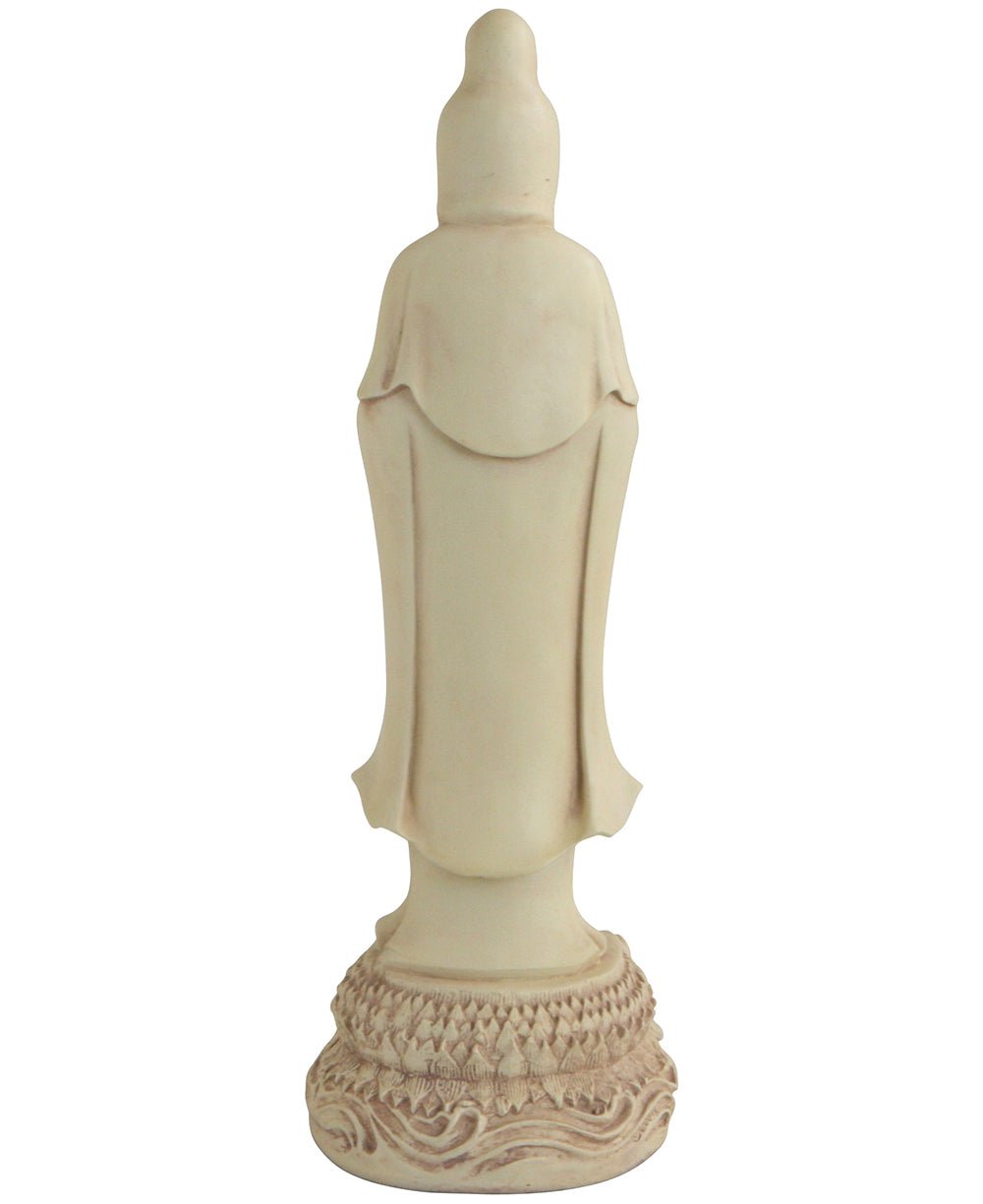Kwan Yin Statues
10 products
10 products
Who is Kuan Yin?
Also known as Kwan Yin & Guan Yin
Dan Brown made the phrase “sacred feminine” a household term in his bestseller The Da Vinci Code; the concept however, has been in existence for centuries and is a central aspect of ancient, pre-Christian religions. Guanyin, from Chinese Buddhism, is comparable to Mother Mary, an embodiment of mercy and infinite compassion.
Chinese Buddhists believe that Guanyin is the female aspect of Avalokitesvara, the bodhisattva of Compassion. It has been debated that Guanyin’s origins go back to Taoism, the indigenous religion of China. As Mahayana Buddhism began to filter into China from the 1st century CE, Taoist deities were co-opted into Buddhism – a deliberate tactic, perhaps, on the part of Buddhists to gradually phase out the older religion.
Notwithstanding the debate over her history, the fact remains that Guanyin is greatly revered across Buddhist communities in Asia. She is known as Kannon in Japan, Gwan-eum in Korea, Kuan Eim in Thailand and Dewi Kwan Im in Indonesia. To Tibetan Buddhists she is Tara, born from a single tear shed by Avalokitesvara.
Depiction
Between the 10th and 13th centuries, Guanyin’s features in Chinese iconography were distinctly masculine. Over time, she acquired an androgynous form and eventually morphed into a goddess-like figure. In contemporary iconography, Guanyin is depicted as an ethereally lovely, white-robed goddess. A popular representation has her standing on a lotus petal. Her head, encircled by a halo, is slightly tilted, intent on catching the smallest plea for help. The material used to sculpt the statue symbolizes her many virtues – jade for virtue, marble for constancy and porcelain for innocence.
Depending upon the various schools of Chinese Buddhism, Guanyin may be seen in solitary meditation or seated by the side of a Buddha, with another bodhisattva accompanying them. As a symbol of compassion, Guanyin is popularly linked with vegetarianism. Her image is often seen in the interiors of vegetarian restaurants in China and Buddhist literature on vegetarianism.
Subscribe and Save!





















